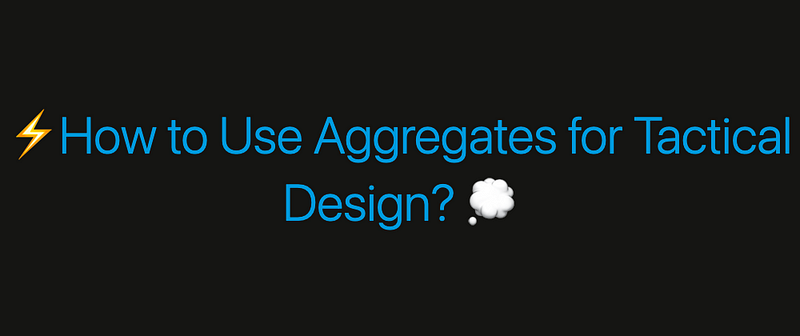Mastering Aggregate Patterns for Tactical Software Design
Written on
Understanding Aggregates in Software Design
In the realm of software architecture, particularly within Domain-Driven Design (DDD), aggregates serve as critical components. They act as boundaries for transactional consistency, ensuring that business invariants are maintained within their limits.

Principles to Guide Aggregate Design
When working with aggregates, there are four fundamental principles to consider:
- Safeguard Business Invariants: Ensure that all transactions within an aggregate are consistent. Everything that happens inside the aggregate must adhere to its rules.
- Keep Aggregates Small: Large aggregates can lead to transactional issues, especially when multiple users with differing objectives attempt to modify the same aggregate, which can result in concurrency problems. Smaller aggregates are generally quicker to load and consume less memory.
- Reference Aggregates by Identity Only: Entities within an aggregate should not be referenced externally. Instead, reference the aggregate itself. If an entity needs to be accessed from different aggregates, this may indicate a need to reevaluate the design for potential subdivision into smaller aggregates. It's important to note that while a Value Object can exist in multiple aggregates, an Entity cannot. This prevents scenarios where the same entity instance is inadvertently shared across aggregates, leading to potential inconsistencies.
- Utilize Eventual Consistency for Updates: Eventual consistency ensures that, over time, data will become consistent across the system. This approach is particularly useful in fault-tolerant applications, allowing for temporary discrepancies in data until they are reconciled.
The first video titled "How to Use Aggregates for Tactical Design" delves into the effective application of aggregate patterns in various architectural frameworks, highlighting their importance in maintaining consistency and enhancing system resilience.
Effective Aggregate Modeling
It is crucial to avoid creating an anemic model for the Aggregate Root, which merely stores data without encapsulating business logic. An aggregate should contain one or more embedded Entities and Value Objects, with a distinct root Entity that embodies the aggregate's overall purpose. Use a common language when naming public methods, and consider patterns like Command Query Responsibility Segregation (CQRS), where methods that alter data return void.
Choosing the Right Abstraction
Adhering to ubiquitous language—like "scrum management software"—is essential. Overly abstract models can deviate from this language and create confusion. Avoid models like ScrumItem with generic properties; instead, be specific to maintain clarity and relevance in the design.
Common Pitfalls in Modeling
Excessive abstraction can lead to neglecting the ubiquitous language, complicating the representation of specific types. Complex hierarchies and special cases often result in unnecessary code and can hinder the user interface's effectiveness. Pursuing a design based on future-proofing often leads to disappointment when real-world applications don't align with theoretical expectations.
Best Practices for Aggregate Design
To achieve optimal results, adhere to the following guidelines:
- Follow Ubiquitous Language: This aligns the model with the mental framework of domain experts, fostering a clearer understanding.
- Design Small Aggregates: Limit aggregates to a single entity unless absolutely necessary. Maintain a chart of aggregates and their dependencies, and consult domain experts to establish acceptable timelines for updates.
The second video, also titled "How to Use Aggregates for Tactical Design," further explores the principles and practices necessary for successful aggregate implementation, providing valuable insights into effective software architecture.